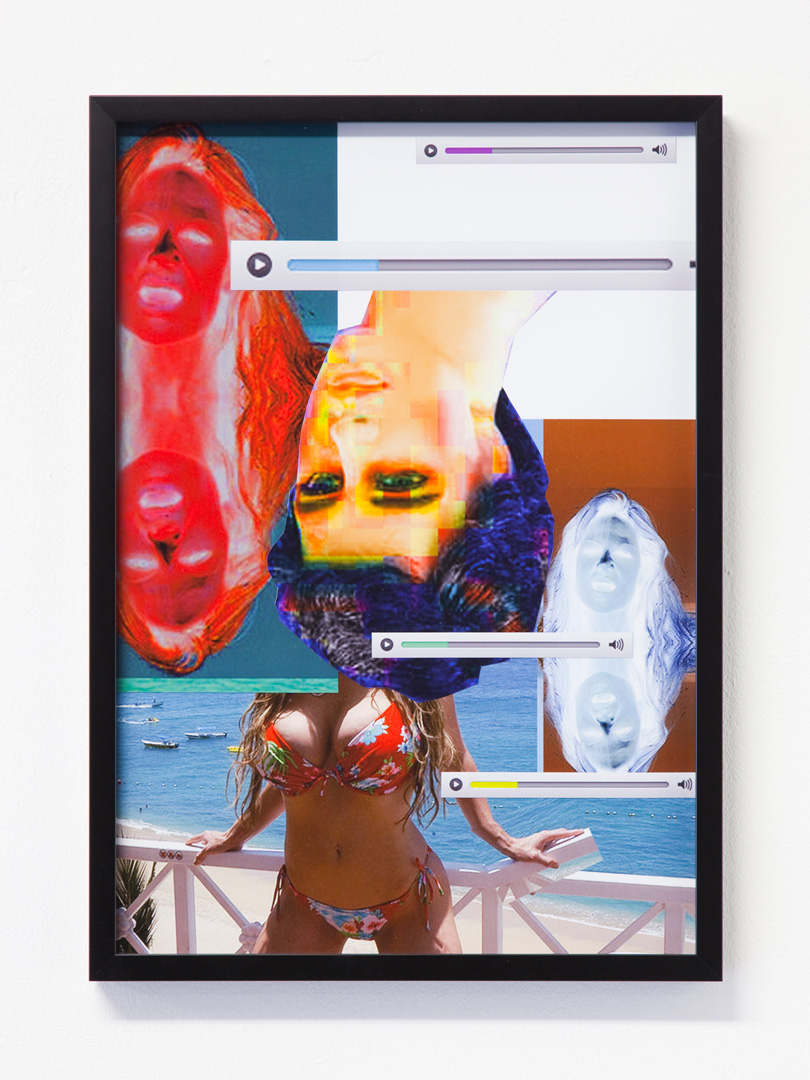RESET II AND FUTURISM
Frank Ammerlaan, Jane Benson, Aleksandra Domanović, Christian Falsnaes, Berta Fischer, Hiroko Komatsu, Susanne, Paesler, Johanna Reich, Evan Roth, Pepo Salazar, Adrian Sauer, Fedele Azari, Jamar 14 (Piero Gigli), F.T. Marinetti, Marisa Mori, Ivo Pannaggi, Enrico Prampolini and others
September 3rd, 2016 – January 21st, 2017
“The internet is changing the structure of our brains and the structure of our planet in extraordinary ways, so quickly that we haven’t yet developed a proper vocabulary for it. Technological progress has accelerated to the point that the future is happening to us far faster than we could ever have anticipated. This new world is what we call “extreme present,” a time in which it feels impossible to maintain pace with the present, never mind to chart the future.” Hans Ulrich Obrist, What Is the Future of Art, February 2016
“RESET”, the exhibition series initiated by | PRISKA PASQUER last year, is devoted to artists whose work holds a mirror up to the far- reaching developments of the digital age.
While its predecessor explored modernism, “RESET II” examines the parallels between contemporary art and Italian futurism. The exhibition focuses on three aspects: Temporality and speed, new ways of seeing and representing things and cross-genre works of art.
“Futurism is based on the complete renewal of human sensibility that has occurred as an effect of science’s major discoveries. Those people who today make use of the telegraph, the telephone, the gramophone, the train, the bicycle, the motorcycle, the automobile, the ocean liner, the dirigible, the airplane, the cinema, the great newspaper (the synthesis of a day in the world’s life) are not aware of the decisive influence that these various forms of communication, transportation, and information have on their psyches.”
Filippo Tommaso Marinetti, Destruction of Syntax. Imagination without Strings, 1913
The art of the Italian futurists centres on the themes of dynamism, progress and speed. The artists saw the changes engendered by technical progress as a break with the historical past, as a fundamental change and as a challenge to be countered with new artistic means. In their zeal, they attempted to create the new “beauty of speed”. In doing so, they experimented with all media: painting, photography, sculpture, music and literature.
Some 100 years on, time has once again accelerated dramatically thanks to digital development. Today, we live at a speed that no longer seems to fit into the historic time model of past, present and future. Terms such as “post-present”, “super-now” or “extreme present” attempt to describe this state of radical acceleration.
As with the avant-garde a hundred years ago, today’s artists are looking for adequate forms of expression in a dramatically changing world.
The “RESET II and FUTURISM” exhibition also features an accompanying programme. A number of events will be held between September 2016 and January 2017, illustrating different perspectives of the subject and discussing critical aspects.
„Das Internet verändert die Struktur unseres Gehirns und die Struktur unseres Planeten auf außergewöhnliche Weise, so schnell, das wir noch kein angemessenes Vokabular dafür entwickelt haben. Der technologische Fortschritt hat sich dermaßen beschleunigt, dass uns die Zukunft viel schneller wiederfährt, als wir es je vorhersehen konnten. Diese neue Welt nennen wir, extreme Gegenwart’, eine Zeit, in der es sich unmöglich anfühlt, mit der Gegenwart Schritt zu halten, geschweige denn, die Zukunft zu entwerfen.“ Hans Ulrich Obrist, What Is the Future of Art, Februar 2016
Die im vergangenen Jahr von |PRISKA PASQUER gestartete Ausstellungsreihe „RESET“ widmet sich Künstlern, die unmittelbar die weitreichenden Entwicklungen des digitalen Zeitalters reflektieren.
Ging es in der ersten Ausgabe um die Auseinandersetzung mit der Moderne, thematisiert „RESET II“ die Parallelen zwischen der aktuellen Gegenwartskunst und dem italienischen Futurismus. Die Ausstellung fokussiert drei Aspekte: Zeitlichkeit und Geschwindigkeit, neue Seh- und Darstellungsgewohnheiten sowie gattungsübergreifendes künstlerisches Arbeiten.
„Der Futurismus beruht auf einer vollständigen Erneuerung der menschlichen Sensibilität, die eine Folge der großen wissenschaftlichen Entdeckungen ist. Wer heute den Fernschreiber, das Telefon, das Grammophon, den Zug, das Fahrrad, das Motorrad, das Auto, den Überseedampfer, den Zeppelin, das Flugzeug, das Kino, die große Tageszeitung (Synthese eines Tages der Welt) benutzt, denkt nicht daran, dass diese verschiedenen Arten der Kommunikation, des Transportes und der Information auf seine Psyche einen entscheidenden Einfluss ausüben.“ Filippo Tommaso Marinetti, Zerstörung der Syntax. Drahtlose Phantasie. Befreite Worte, 1913
Die Kunst der italienischen Futuristen kreist um die Topoi von Dynamik, Fortschritt und Geschwindigkeit. Die Künstler begriffen die Veränderungen durch den technischen Fortschritt als Bruch mit der historischen Vergangenheit, als grundsätzliche Veränderung und Herausforderung, der es mit neuen künstlerischen Mitteln zu begegnen galt. Begeistert versuchten sie, die neue „Schönheit der Geschwindigkeit“ zu erfassen. Dabei experimentierten sie mit allen Medien: Malerei, Fotografie,Skulptur, Musik und Literatur.
Rund 100 Jahre später hat sich die Zeit durch die digitale Entwicklung noch einmal rasant beschleunigt. Heute leben wir in einer Geschwindigkeit , die mit dem historischen Zeit-Modell von Vergangenheit/Gegenwart/Zukunft gar nicht mehr erfassbar scheint. Begriffe wie „Post-Gegenwart“, „Super-Jetzt“ oder „Extreme Gegenwart“ versuchen, diesen Zustand der radikalen Beschleunigung zu beschreiben. Ebenso wie die Avantgarde vor hundert Jahren suchen auch heutige Künstler nach adäquaten Formen im Umgang mit der sich dramatisch verändernden Welt.
Ergänzt wird die Ausstellung „RESET II and FUTURISM“ durch ein Begleitprogramm. Zwischen September 2016 und Januar 2017 finden mehrere Veranstaltungen statt, in denen verschiedene Perspektiven des Themas beleuchtet und kritische Aspekte diskutiert werden.


























